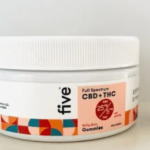CBD and CBG, both cannabinoids from cannabis, have unique chemical structures influencing their bioavailability and interaction with the body’s endocannabinoid system. CBG interacts with different receptors, affecting pain, inflammation, and mood differently than CBD. CBG shows promise in managing inflammation, pain, and even neurodegenerative disorders. Understanding these distinctions is crucial for leveraging their therapeutic potential.
Origins and Chemical Structures
CBD (Cannabidiol) and CBG (Cannabigerol) are two cannabinoids derived from the cannabis plant, each with distinct origins and unique chemical structures. CBD is typically extracted from hemp, while CBG is found in higher concentrations in the earlier stages of the cannabis growth cycle.
Read also How Does Cbd Affect You
These cannabinoids have different chemical structures, affecting their bioavailability and potential interactions with the endocannabinoid system in the human body.
Varied Effects on the Body
Research studies have shown that CBG interacts with different receptors in the body compared to other cannabinoids, potentially leading to a diverse range of effects on various physiological processes.
These cannabinoid interactions can trigger unique cellular responses, influencing functions such as pain perception, inflammation, and mood regulation.
Understanding these distinct mechanisms of action is crucial in elucidating the specific effects of CBG on the human body.
Potential Therapeutic Applications
Exploring the therapeutic potential of CBG in various medical conditions requires a comprehensive understanding of its distinct pharmacological properties and mechanisms of action.

Clinical studies have shown promising results in suggesting CBG’s potential in managing conditions like inflammation, pain, and neurodegenerative disorders.
However, more research is needed to fully elucidate its efficacy and safety profile, including potential side effects, before widespread therapeutic use can be recommended.
Conclusion
In conclusion, the differences between CBD and CBG lie in their origins, chemical structures, and varied effects on the body. Despite these distinctions, both compounds show promise in various therapeutic applications.
As research continues to uncover the potential benefits of CBD and CBG, it becomes evident that they offer unique opportunities for addressing a range of health issues. Ultimately, the distinct properties of CBD and CBG pave the way for innovative and effective treatment options for individuals seeking natural alternatives.





 What Is Full Spectrum Cbd Gummies
What Is Full Spectrum Cbd Gummies